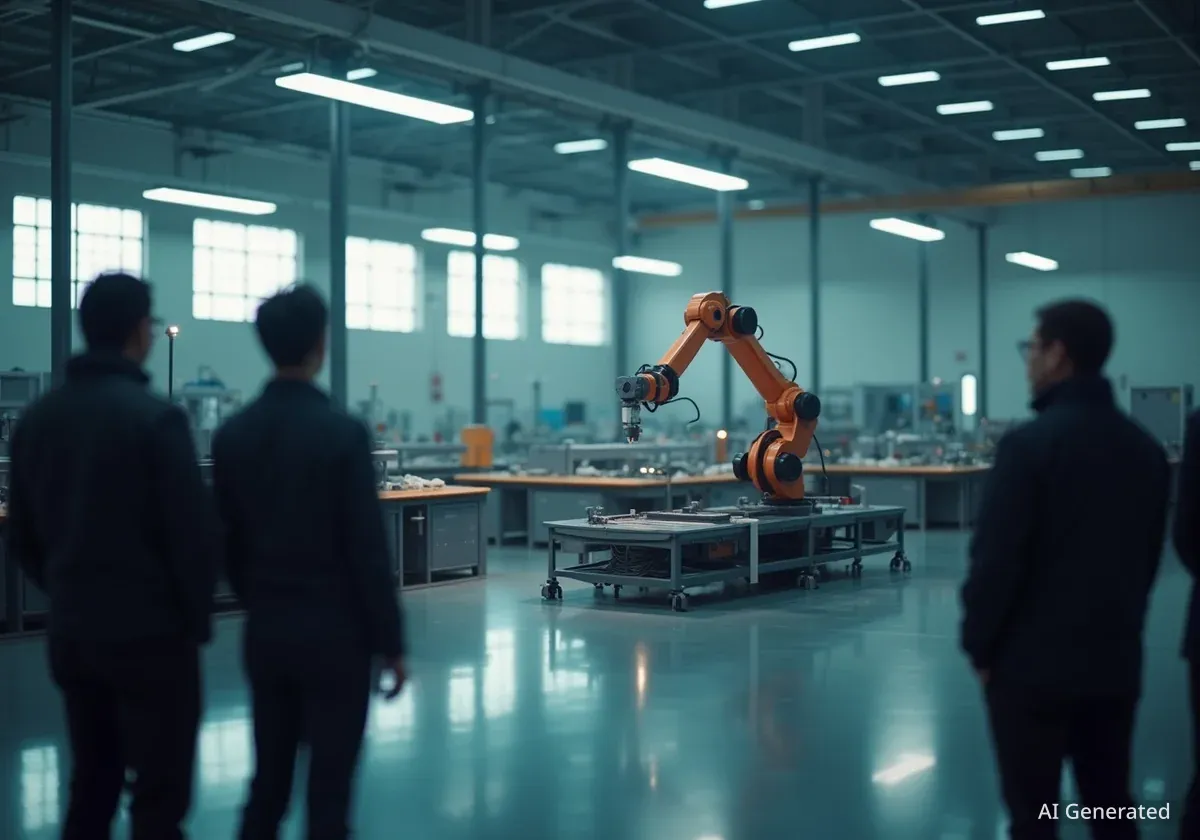Ford CEO Jim Farley has issued a warning that the nation's focus on high-tech manufacturing and artificial intelligence is overlooking the critical role of blue-collar industries. He argues that without a strong foundation of skilled trades, the infrastructure required for technological advancement cannot be built, creating a significant obstacle to future growth.
Farley's comments highlight a growing concern among business leaders: the so-called "essential economy," which includes construction, maintenance, and skilled trades, is not receiving the attention or investment it needs. This neglect could undermine the very technological progress the country aims to achieve.
Key Takeaways
- Ford CEO Jim Farley states that the AI and high-tech sectors cannot succeed without skilled blue-collar workers like electricians and construction tradespeople.
- A study by the Aspen Institute reveals a widening productivity gap between the white-collar and blue-collar sectors of the economy.
- While much attention is on AI replacing white-collar jobs, Farley emphasizes a more immediate crisis in the shortage of skilled labor needed to build new infrastructure.
- Farley is organizing a summit to bring together leaders from business and government to develop policies that support these foundational industries.
The Foundation of the Tech Economy
While discussions about the future of work often center on artificial intelligence and its potential to displace white-collar professionals, Jim Farley believes the more immediate crisis lies elsewhere. He points out that the physical infrastructure for the digital age—data centers, advanced manufacturing plants, and updated supply chains—does not build itself.
These projects require a robust workforce of skilled electricians, plumbers, welders, and construction workers. According to Farley, a societal failure to recognize and support these professions is creating a critical bottleneck. The ambition to lead in AI is directly threatened by a shortage of the people needed to build the facilities that house the technology.
A Growing Productivity Divide
Farley's concerns are supported by economic data. A recent study from the Aspen Institute identified a significant and growing divide in productivity between the information-driven white-collar economy and the hands-on blue-collar sector. This gap has tangible consequences for the broader economy.
Productivity and Prices
The productivity crisis in skilled trades directly contributes to higher prices for construction and maintenance, which in turn shrinks profitability for businesses of all sizes. This affects everything from building new factories to maintaining existing infrastructure.
When there are not enough skilled workers to meet demand, project timelines extend, labor costs rise, and overall efficiency declines. This inefficiency acts as a drag on economic growth, making it more expensive for companies to expand their operations in the United States.
A Call for a Societal Shift
Farley insists that the workforce shortage in skilled trades is not merely a personnel issue but a deeper societal problem rooted in perception and priorities. He suggests that for decades, cultural emphasis has shifted away from vocational training and skilled labor as viable and respected career paths.
"On the surface, this looks like a people problem, and most are. But it's actually not that simple. It's an awareness problem. It's a societal problem," Farley stated in a recent interview.
To address this, he is organizing the "Accelerate" summit, an initiative designed to rally leaders from business, technology, and government. The goal is to create a dialogue that leads to concrete policy changes. These changes would aim to improve awareness, enhance vocational training programs, and create incentives for individuals to enter skilled trades.
Policy Hurdles
Current policies related to tariffs and immigration can also present challenges for companies trying to expand. These policies can affect the cost of materials and the availability of labor, further complicating the efforts of industries that are already facing a workforce shortage.
The Dual Challenge of AI and Labor
The focus on the blue-collar workforce shortage exists alongside a parallel conversation about AI's impact on white-collar jobs. Leaders in the tech industry have been vocal about the potential for significant disruption. Anthropic CEO Dario Amodei, for instance, has predicted a major upheaval for office-based roles due to advancing AI capabilities.
This creates a complex economic picture. On one hand, investment in artificial intelligence is driving the stock market and creating new avenues for economic growth. Companies are beginning to freeze or reduce hiring for certain white-collar positions as they explore how AI can handle administrative, analytical, and creative tasks.
An Unstable Job Market
The result is a job market that appears to be teetering. While technology drives investment, it is not translating into a proportional demand for human workers in some sectors. This leads to a core political and economic question for the coming years: what, if any, government intervention is needed to help workers navigate this transition?
- White-Collar Disruption: AI is increasingly capable of performing tasks traditionally done by professionals in fields like law, marketing, and software development.
- Blue-Collar Shortage: A lack of skilled tradespeople threatens to slow down the construction of the very infrastructure the tech economy relies on.
- Economic Disconnect: The stock market is booming due to AI optimism, but this is not reflected in broad-based job creation, highlighting a potential disconnect between financial markets and the real-world labor market.
Farley's initiative seeks to rebalance the conversation, urging policymakers and business leaders not to forget the foundational economy. He argues that a successful transition into an AI-driven future requires a holistic approach that supports both the creators of technology and the builders of the world it will inhabit.





